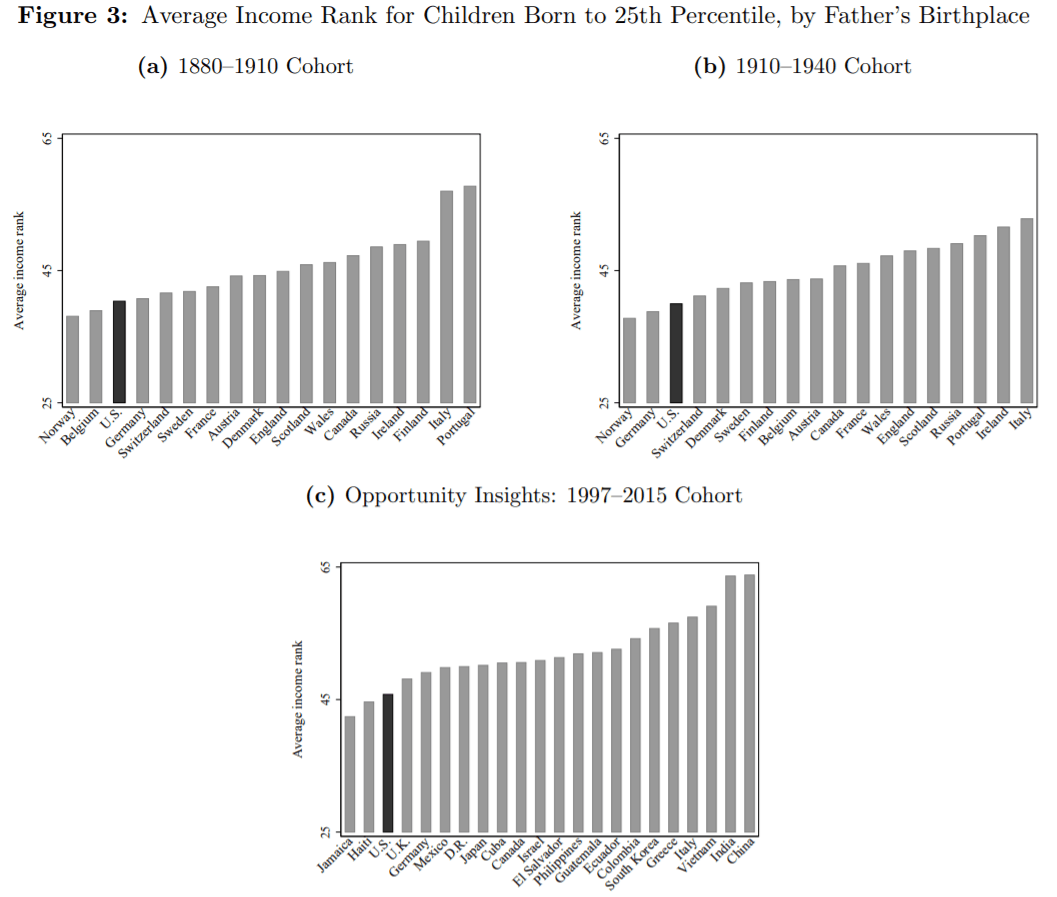Dropping Knowledge
The American Dream isn’t dead, according to a new working paper from the National Bureau of Economic Research. The paper looks at the economic mobility of second-generation immigrants by comparing economic data from millions of immigrant father-son pairs starting in the 1880s. Researchers find that children of immigrants at the bottom of the income distribution have higher rates of upward mobility than children of native-born parents and that this pattern is consistent across time periods despite significant shifts in countries of origin.

The authors provide a couple reasons why this is the case:
- First-generation immigrants’ incomes often do not reflect their true abilities or skills, especially when they immigrate as adults and/or do not know the language.
- Immigrant parents are more likely to move to areas with higher economic prospects for their families. When the researchers compared children of immigrants to children of native-born parents living in the same county, the economic mobility gap between the two disappeared.
For more, read this write-up by The Upshot.
The Other 49
Pew released a new report looking at Texas student loan data from 2007-2011 to make recommendations for the Department of Education and Congress to boost repayment success. Here’s what they found:

Of those who defaulted, about 60% paused payments at least once before defaulting. Of the one in five borrowers whose balances increased, 98% of them had paused payments at least once.
Based on these and other findings, the report outlines three recommendations:
- Identify at-risk borrowers before they are in distress, including by using at-risk indicators like pausing and suspending payments.
- Provide servicers with resources and comprehensive guidance on how to prioritize interactions and engagement with high-risk borrowers.
- Eliminate barriers to enrollment in affordable repayment plans.
For Your Consideration
A new working paper out of Harvard looks at the impact of guidance counselors on high schoolers’ graduation rates, college attendance, selectivity, and persistence. Researcher Christine Mulhern finds that guidance counselors have similar effects on educational attainment as teachers, and effective counselors have the greatest impact on low-achieving and low-income students, suggesting that access to effective counselors could reduce socioeconomic gaps in educational attainment.
Read Mulhern’s Twitter thread here for a summary of her findings.
What we're reading
Why Rural Matters
In this new report, North Carolina is tied for second in terms of having the greatest needs among students in rural areas.... Read the rest-
If People Were Paid by Ability, Inequality Would Plummet
-
University of Chicago projected to be the first U.S. university to cost $100,000 a year
-
What Menopause Does to Women’s Brains
-
City Apartments or Jungle Huts: What Chemicals and Microbes Lurk Inside?
-
The Changing Demographics of America's Suburbs
-
Free College Is Good, but Free Day Care Is Better


